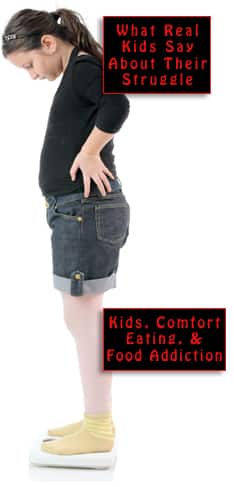![[top ten fitness facts related to the benefits of exercise on the brain, stress and energy levels, and overall health]](http://childhoodobesitynews.com/wp-content/uploads/2014/07/Top-10-fitness-facts.jpg)
The National Institutes of Health website offers a succinct definition of Cognitive Behavioral Therapy and its usefulness:
CBT is the most established psychological treatment for BN (bulimia nervosa) and BED (binge eating disorder), with demonstrated efficacy over pharmacological and other psychological therapeutic options. The goal of treatment is to identify, monitor, and tackle the cognitions and behaviors that maintain the disorder while heightening the motivation for change.
CBT is said to have “accumulated one of the largest bodies of research evidence in any psychological field.” Its techniques have been around for at least 20 years, subjected to constant refinement, and adapted to more and more situations, as it becomes clear that the various types of eating disorders are fundamentally more alike than different.
There was a period when a lot of attention centered around AN (anorexia nervosa), BN, and EDNOS. Actually about 70% of problems came under the last heading, which stands for “eating disorder not otherwise specified,” including not only binge eating but other behavior patterns close to, but not exactly aligned with, the official descriptions of AN and BN. What they all have in common is the patient’s constant preoccupation with food and body weight, along with the potential for alleviation by CBT which, while not universally successful, seems to be the best hope so far.
Another trait shared by all eating disorders is the possibility of permanent damage to the individual’s health, which is also true of obesity. Since the explosion of the childhood obesity epidemic, the world is full of children who have joined the risk pool for developing serious lifelong conditions like metabolic syndrome, Type 2 diabetes, and heart disease. Obese kids are also in danger of going too far in the opposite direction and sliding into other kinds of eating disorders like AN or BN.
As Childhood Obesity News has discussed, there seems to be a set of core cognitions (or what Dr. Bryan P. Walsh simply calls unhealthy beliefs) associated with the risks that obesity brings. They are “body dissatisfaction, dietary restriction, overvaluation of weight and shape, negative affect, and low self-esteem,” according to researchers in the CBT field.
The National Obesity Observatory in the United Kingdom has identified four major areas that must be addressed — behavioral, biological, psychological, and social. Experts there arrived at the conclusion that it is more effective to concentrate on psychological factors than to focus specifically on weight loss.
In both Britain and the U.S., there are not enough practitioners to go around, so entrepreneurial professionals are busy modifying CBT into a self-help modality available via electronic devices. Overweight youth are best served by interventions whose behavioral components modify both activity and diet. The NIH website says parents take an active role in this:
Parents are also encouraged to utilize a behavioral reward system, in which successful goal completion (e.g., weight loss, reduced caloric intake, increased physical activity) is reinforced with rewards that are interpersonal and/or promote healthy behavior (e.g., family outings, bike riding, ice skating).
The page also discusses family intervention strategies, centered around self-monitoring and stimulus control, which is a fancy way of saying “don’t keep potato chips and ice cream in the house.” Since parental success with weight control is a strong predictor of success in the kids, parents are strongly urged to step up and be excellent role models.
Your responses and feedback are welcome!
Source: “Cognitive Behavioral Therapy for Weight Management and Eating Disorders in Children and Adolescents,” NIH.gov, 04/01/12
Source: “What are CBT-BN, CBT-BED and CBT-E?” CounsellingDirectory.org.uk, 08/08/13
Image by trutherbot

 FAQs and Media Requests:
FAQs and Media Requests: 











